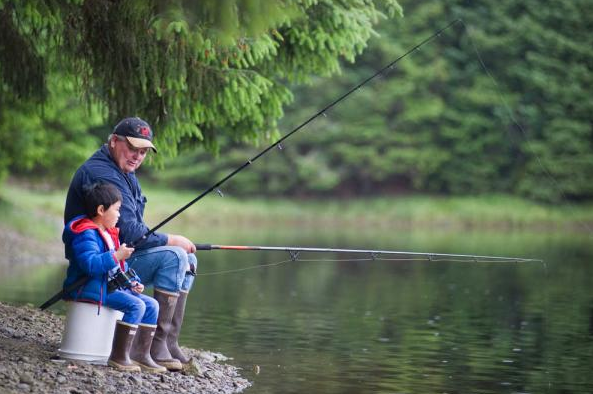Fish Creek Park, a small City and Borough of Juneau park at the mouth of Fish Creek, is the site of intensive fishing and waterfowl hunting in season. But on a quiet, rainy day in September, we set forth from the parking lot with a less predatory mission: I’d heard a report that an unusual plant had been found there (and one other place in Juneau — so far), and we wanted to find it ourselves.
We looked in both ponds, checked the marshy estuary area, peered into the marsh on the west side — all to no avail.
The next day, we returned with more explicit directions, and there it was! An aquatic plant known as arrowhead, for the shape of the aerial leaves (Sagittaria latifolia). Unfortunately, the plants were torn up and quite bedraggled, floating just below the water surface. No wonder we missed them on the first try.
This species of arrowhead is known to occur in southern Southeast Alaska, but this seems to be the first report for our area. Another species of Sagittaria occurs in the Interior. Anyhow, mission finally accomplished. It will be fun to look next summer for the aerial leaves above water and the white flowers.
Beavers have left their marks all around the pond. Their trails cross the dikes, headed for the estuary and the creek. Their big teeth have brought down several trees and notched others. There is no sign of a winter cache of sticks in front of the lodge, and other observers report seeing no activity recently, so the beavers may be gone.
Heading out the well-established storm berm on the trail to the former island (now a point), we sampled the rose hips, famous as a source of vitamin C. One is advised to just nibble the outer flesh, so as to avoid the hairs that surround the seeds. But after sampling, we thought the feeble flavor was not worth the trouble. If birds or other critters eat these fruits, do the hairs irritate their mouths?
Out in Fritz Cove there were lots of gulls and mallards, with the customary cacophony of avian conversations.
Many of the mallards were in full breeding dress, with glossy green heads and chestnut-plumaged chests. This seemed to provide a contrast with the mallards that hang out on my home pond: they all look like brown females, but some are just beginning to get the green and dark chestnut feathers that adorn the mature males.
Are these tardy guys just younger? Could it be that they don’t go out to the cove until they have full male coloration? Mallards begin their courtship activities in fall and early winter, so Fritz Cove presumably will be a local hotspot for pair formation.
We perched on some upper-beach rocks for tea and crumpets. A little flicker of movement between nearby rocks caught my eye, and out popped a tiny Pacific wren. It darted in and out of the loose boulders, almost at our feet, successfully catching insects, including a bright green caterpillar. Kinglets and chickadees called and foraged in the spruces above our heads. A chorus of gentle popping sounds from down the beach may have come from barnacles snapping shut their “doors” as the beach dried out.
As the tide went out, a gang of crows streamed out of the spruce grove and landed on a dry berm that had been above the tide for some time. After loafing around there for a while, they wandered down toward the waterline behind the berm. Were they waiting for the lowest part of the tide cycle?
All this time, mew gulls were poking around on the mud flats. Glaucous-winged gulls foraged near the mussel beds. Every so often, one picked up a mussel and marched around, holding the object in its bill, as if showing it off to comrades.
On the way back to the car, we spotted an aggregation of whirligig beetles doing their characteristic mad, whirling frenzy on the surface of a pool. I have found no solid information about what those whirls are doing and why they are doing it, but there are hints that the aggregations may not be as disorganized as they seem.
Beside the trail were two red amanita mushrooms. Both had been munched by critters that don’t seem to care about the notorious toxins. Rodents had left a few parallel marks of their incisors. Holes were burrowed through the mushroom caps by unknown beasts (worms? insects?). And along the edge of one cap were clusters of miniscule marks of a rasping tongue, presumably of a slug. How do these consumers deal with the toxins? Perhaps just by taking very small samples at a time, mixing well with other dietary items? Or can they detoxify the nasty chemicals?
As so often happens on our little walks, there were lots of small observations that gave pleasure, interest and questions. I wonder how many other small things we missed!
• Mary F. Willson is a retired professor of ecology.
Read more Outdoors news:
Fungus man and the start of it all
After ruling, next step in salmon management unclear
It’s time to talk crab season projections

